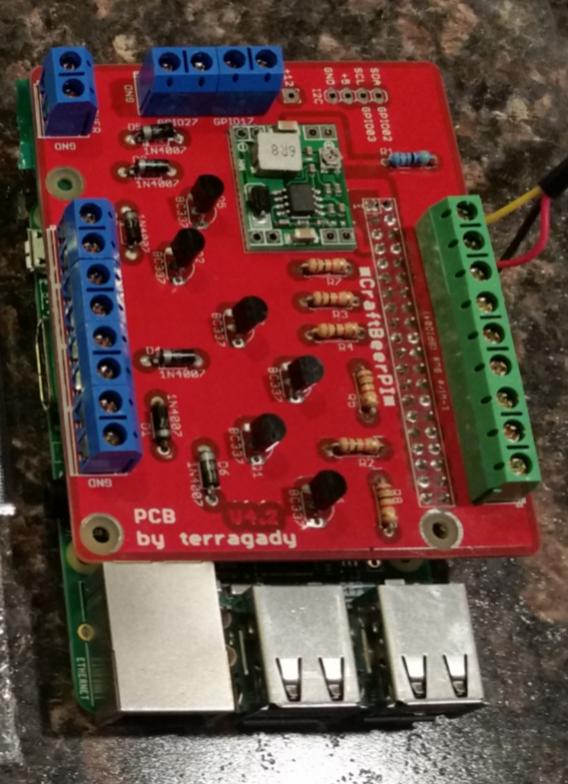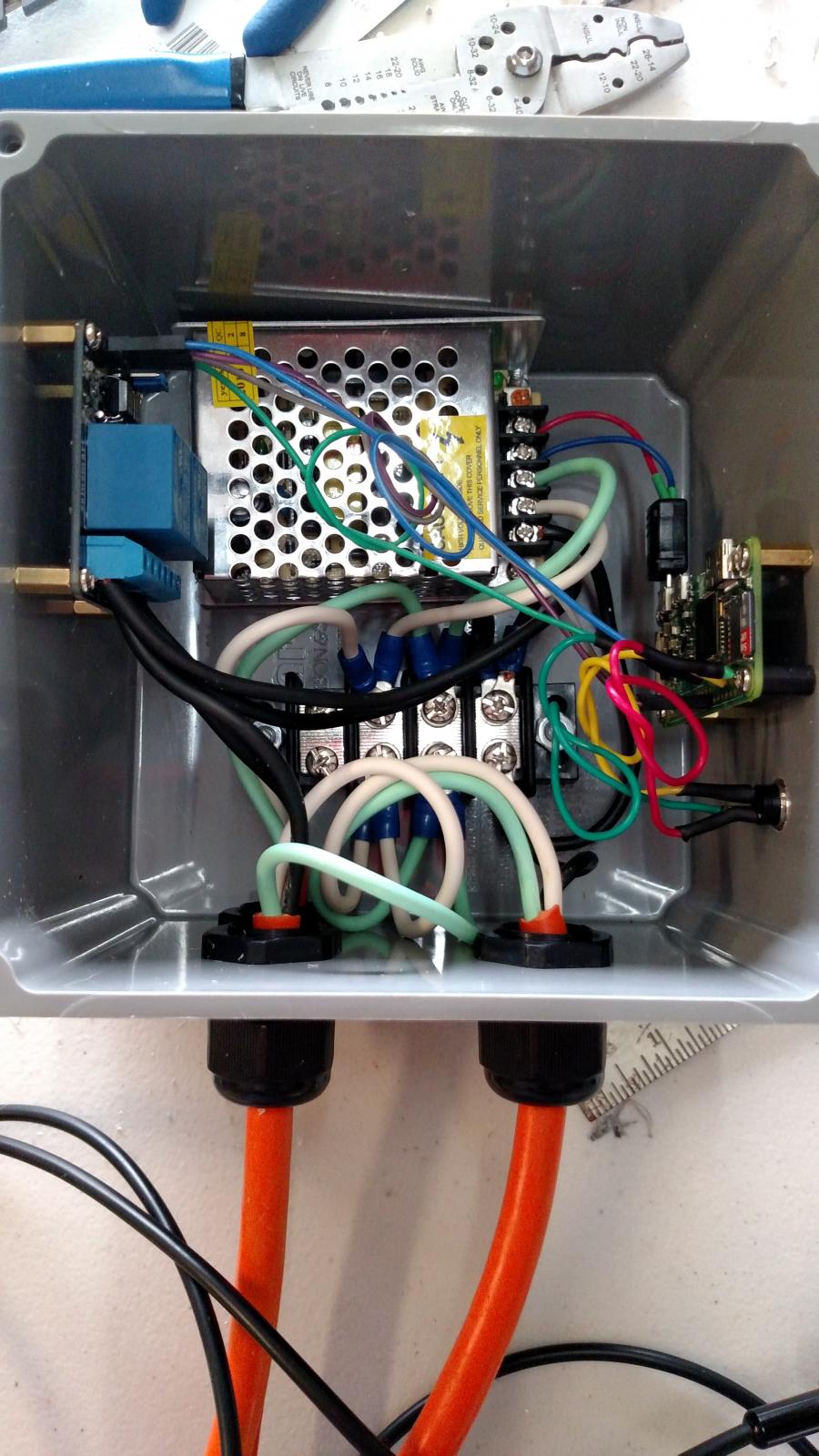UndeadFred
Well-Known Member
I finally just started to play with my Pi3 and "Craft Beer Pi" a few nights ago. Looks okay so far, but I'd like to eventually use a small display (320x480) at the boil kettle. (I currently use a TA4 PID and a SSVR for boil control in series with each other, in a Chugger pump circulated eBIAB setup). I'm uncertain if I'll be able to get the current interface to work properly with the small touchscreen. I might have to hack a non-web interface of my own in to do this. But otherwise I suppose I could just use my phone or an old tablet as a display as well.
I do have a Pi-Zero-W on the way (I got lucky apparently and managed to get one just before they vanished on the launch day) and eventually I'm going to use that to run the system.
It is actually pretty simple to hack in the PWM mod that "schrod" (David Schroeder) wrote and mentioned in post #527. I did it a tad bit differently in that I simply downloaded the pwm.py from his git hub branch (craftbeerpi/brewapp/base/automatic/) and also added the "import pwm" to the __init__.py code in that same directory. (You obviously can also just drop that init file from github in there to overwrite the existing __init__.py). I also deleted the compiled init .pyc code, and rebooted the Pi3. And the PWM code just shows up there.
Now I do suppose that if you pull updates then it might disappear on your local copy, but it takes about 2 minutes to add it back. And it does work just fine and in a manner that you would suspect. Personally I think that's easier than running a patch.
I'm looking forward to getting this hooked up to my system as I could at least automate step mashes. With the buzzer and timer, I suppose I could also pretty much automate everything except pulling the bag from the kettle at this point as well. No, I don't plan on a motorized crane or pulley to lift the bag out.
I'd like to look into using this with a fermentation chamber also, but I'm not quite there yet.
Anyway.. fun stuff so far. I'm not really a Python guy but overall the code looks straightforward enough that I can easily read it. And that's good. It seems much simpler to maintain than either Elsinore or BrewPi. But we will see.
I'm initially going to hack it into my system by switching the control lines from the PID to SSR. (I'll add a DPDT switch so I can go back and forth). I left in the RTD sensor and drilled a second hole for my home made thermowell for one of those Chinese counterfeit DS18B20 stainless probes.. I stuffed a Bayou Classic weldless 1/2" adapter with cut up silicon tubing as a gasket and the probe. It worked like I planned it that way. Interface is a hacked together soldered board on a connector with an LED for the heater and the probe and pullup on it. Might get nicer at some point, but it doesn't really need to be anything fancier than that.
Fun stuff so far. At least the DS18B20 tracks the temperature really closely with what I calibrated the RTD/PID setup and a Javelin. So I have more confidence that past brews were really mashed at the right temperature now!
I do have a Pi-Zero-W on the way (I got lucky apparently and managed to get one just before they vanished on the launch day) and eventually I'm going to use that to run the system.
It is actually pretty simple to hack in the PWM mod that "schrod" (David Schroeder) wrote and mentioned in post #527. I did it a tad bit differently in that I simply downloaded the pwm.py from his git hub branch (craftbeerpi/brewapp/base/automatic/) and also added the "import pwm" to the __init__.py code in that same directory. (You obviously can also just drop that init file from github in there to overwrite the existing __init__.py). I also deleted the compiled init .pyc code, and rebooted the Pi3. And the PWM code just shows up there.
Now I do suppose that if you pull updates then it might disappear on your local copy, but it takes about 2 minutes to add it back. And it does work just fine and in a manner that you would suspect. Personally I think that's easier than running a patch.
I'm looking forward to getting this hooked up to my system as I could at least automate step mashes. With the buzzer and timer, I suppose I could also pretty much automate everything except pulling the bag from the kettle at this point as well. No, I don't plan on a motorized crane or pulley to lift the bag out.
I'd like to look into using this with a fermentation chamber also, but I'm not quite there yet.
Anyway.. fun stuff so far. I'm not really a Python guy but overall the code looks straightforward enough that I can easily read it. And that's good. It seems much simpler to maintain than either Elsinore or BrewPi. But we will see.
I'm initially going to hack it into my system by switching the control lines from the PID to SSR. (I'll add a DPDT switch so I can go back and forth). I left in the RTD sensor and drilled a second hole for my home made thermowell for one of those Chinese counterfeit DS18B20 stainless probes.. I stuffed a Bayou Classic weldless 1/2" adapter with cut up silicon tubing as a gasket and the probe. It worked like I planned it that way. Interface is a hacked together soldered board on a connector with an LED for the heater and the probe and pullup on it. Might get nicer at some point, but it doesn't really need to be anything fancier than that.
Fun stuff so far. At least the DS18B20 tracks the temperature really closely with what I calibrated the RTD/PID setup and a Javelin. So I have more confidence that past brews were really mashed at the right temperature now!



























![Craft A Brew - Safale S-04 Dry Yeast - Fermentis - English Ale Dry Yeast - For English and American Ales and Hard Apple Ciders - Ingredients for Home Brewing - Beer Making Supplies - [1 Pack]](https://m.media-amazon.com/images/I/41fVGNh6JfL._SL500_.jpg)


































